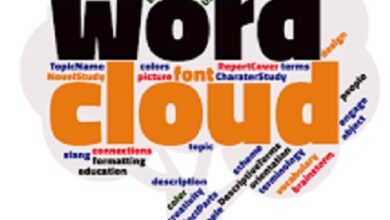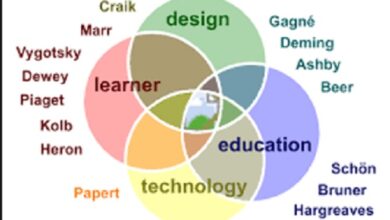What is academic plagiarism/types/implication/checking/detectors
- According to Ferreira (1999), plagiarism is signing or representing someone else’s artistic or scientific work as your own, it is imitating the work of others. academic plagiarism
- For Moraes (2004, p.95), plagiarism is a fraudulent imitation of a work, protected by copyright law, with a real attack on the author’s moral rights: both the paternity and the integrity of his creation.
In other words, academic plagiarism is any copy, be it partial or total, of some existing content, without proper credit being given to the author.
Technology, contact between researchers and ease of access to scientific journals provided a greater exchange of information. But it was also these factors that favored practices such as the “stealing” of ideas.
There are several ways to commit plagiarism. Among the most common practices, we can highlight:
1 – Full Plagiarism
It is copying, word for word, without making any changes, a work or a part of it and not presenting the original source of the text. academic plagiarism
2 – Paraphrase without attributing the source
Paraphrasing (that is, saying the same thing with other words) most of the ideas in a text, without adding its own content, is also plagiarism.
Paraphrasing is often used by students. Generally, a few words of the original text are changed, in an attempt to make it difficult for the evaluator to identify, but the idea of the text is preserved.
3 – Research data (quantitative and qualitative) without mentioning the source
Plagiarism is the act of presenting data from institutions, such as the IBGE, the WHO, or that were verified by other researchers and “forgetting” to mention them in the text or attributing them as their own.
A very common practice that we often do without realizing it is to put:
“Currently, 70 million people in the world suffer from disease X.”
But who said that? Was it you who collected the information or was this data in a book, website or in a survey published by a large body? You must assign the source! EVER! academic plagiarism
4 – Mosaic of plagiarism
It is copying excerpts from different sources, forming a mosaic, but changing small phrases or words to disguise the copy.
It’s taking, for example, small excerpts from different monographs, by well-known or little-known authors, and putting them together as if they were your own new content.
5 – Self-plagiarism
It happens when you borrow your own content, which has already been presented in previous situations.
You may, for example, have presented it in the first period of college and now you also reuse it in the fifth. Or use excerpts from the TCC for postgraduate studies. academic plagiarism
This is very common among students and they don’t even realize they are committing plagiarism.
6 – Copying of images, photographs, graphics, drawings and other visual content
You find a table in a book that greatly simplifies what you want to explain. Then, scan the image, placing it in your work. All right, right? Wrong! You also need to credit the visual content
7 – Non-existent sources
It is very common in ENEM essays. In this case, the person invents a quote and attributes it to any source of influence in history or in a specific social area, for example.
In practice, plagiarism poses problems both for the institution that published the plagiarized work and for the researcher who committed the act.
So, you need to be very careful when evaluating the works submitted at your event.
Choosing a good evaluator, who is careful and has experience in the area, makes all the difference in the plagiarism issue. academic plagiarism
It is common that evaluators already know how to recognize plagiarism immediately, after all, it is something they acquire with practice.
Teachers also usually know the writing style of their students and can tell when that text was written by them or not.
In the academic world, a researcher’s reputation counts for a lot. Committing plagiarism means infringing the Copyright Law
Therefore, plagiarism is a crime and the author must respond in court for illegally copying someone else’s work.
Brazilian justice uses ways to prevent this type of copyright appropriation. It can even revoke the diploma of the person responsible for plagiarism. academic plagiarism
In addition to being a dishonest and reprehensible attitude, the person who commits plagiarism may have the submission and approval of works in congresses, symposia and other academic events impaired. It’s natural: no one wants to host a researcher who has a history of plagiarism on their CV at their event.
After all, the institutions responsible for publishing such works, whether through publishers or magazines, become known for “letting go” this type of fraud and end up losing their authority.
But was it always like this?
Plagiarism in scientific and academic productions already existed in the pre-Google era, but in a more discreet way.
The difficulty in accessing information made it more complicated both for the use of other people’s ideas and for the evaluators to identify illegal copies.
With most of the printed content being transferred to digital platforms, researchers were able to access content that was previously little known and difficult to find.
Universities still do not have standardized rules for identifying and punishing plagiarism cases. academic
Several professors continue to point out this flaw and several damages are affected both for the researcher and for the advisor. academic plagiarism
The use of copyrighted content without proper authorization must be punished, but before that, it is necessary to invest in prevention .
Generally, in the first articles written when you are still a student, the author usually commits academic plagiarism, even without intending to.
Prevention is important and should be encouraged. So that in the future, the researcher knows how to produce original content, which contains their own ideas.
For those who produce events, it is always necessary to be attentive in the publication of articles and also in the presentations of posters and panels.
Ensuring that papers approved and published at your event are free from academic plagiarism is a way of proving the authority and relevance of your event. academic plagiarism
Plagiarism detectors you need to know
A good tip is to use technology to identify plagiarism. There are completely free software that scans for words and paraphrases that have been used in other works.
We have chosen 4 easy-to-use academic plagiarism detectors that will surely help you to identify illegal copies:
1- CopySpider : free tool that allows you to check if the excerpts of a document are similar to others available on the internet and, also, if citation and reference were used in the analyzed text.
2- Plagiarism : free online plagiarism detector. To check for plagiarism, you need to put the text you want to analyze in the “paste your text here” box, which the program will check for compatible texts in search engines. You can also upload files or enter URL for verification.
3- Plagiarism Checker : Easy-to-use online tool. You need to paste your text into the checkbox and click on Check Plagiarism. A simple report will demonstrate whether your text is plagiarism or not. You can also search by URL or file. Tool available in English language. academic plagiarism
4- Plagium : online tool to detect possible plagiarism. It’s pretty intuitive. For a quick and simple check just type or paste the text in the box available at the top of the website. It is also possible to do analysis by URL and file.
5- Plag.pt : online tool for checking plagiarism. Simple tool where you can type or paste text into the box and quickly check if there is a similarity with other documents.
6- Turnitin
As the website says, Turnitin was created to “encourage a teaching environment where students take ownership of their ideas and produce original content, a process that prepares them to succeed academically and innovate beyond the classroom.”
They show how much of the student’s document resembles the contents of the databases. So that teachers can understand how much of the document is not original. Turnitin also reports the sources the student used to write the work.
Plagiarism in events: how to proceed?
Many event producers do not consider the presence of plagiarism in scientific productions. As much as there are specific instructions for the production and formatting of articles.
No event is exempt from academic plagiarism, whether by authors acting in bad faith or by poorly informed authors. academic plagiarism
To avoid plagiarism and not to disqualify your event in the scientific community, it is up to the editorial board and the organizing committee to identify and punish authors.
As the importance of the topic in the Brazilian academic environment is not yet formalized, it is up to the professors and event coordinators to supervise so that cases like these do not happen.
How to avoid plagiarism?
Avoiding plagiarism in your academic work is simple: attribute the source. Ever.
If the content is not yours, mention the author, inform the reader of your work to whom that excerpt belongs.
For this, cite it in the body of the work and do not forget to add it to the references of your research.
Currently, a good option to ensure that the work or article belongs to you is to issue the DOI of the publication.
With the DOI, you guarantee the authenticity of that content and you can even measure the number of times your work was cited by other researchers. academic plagiarism

